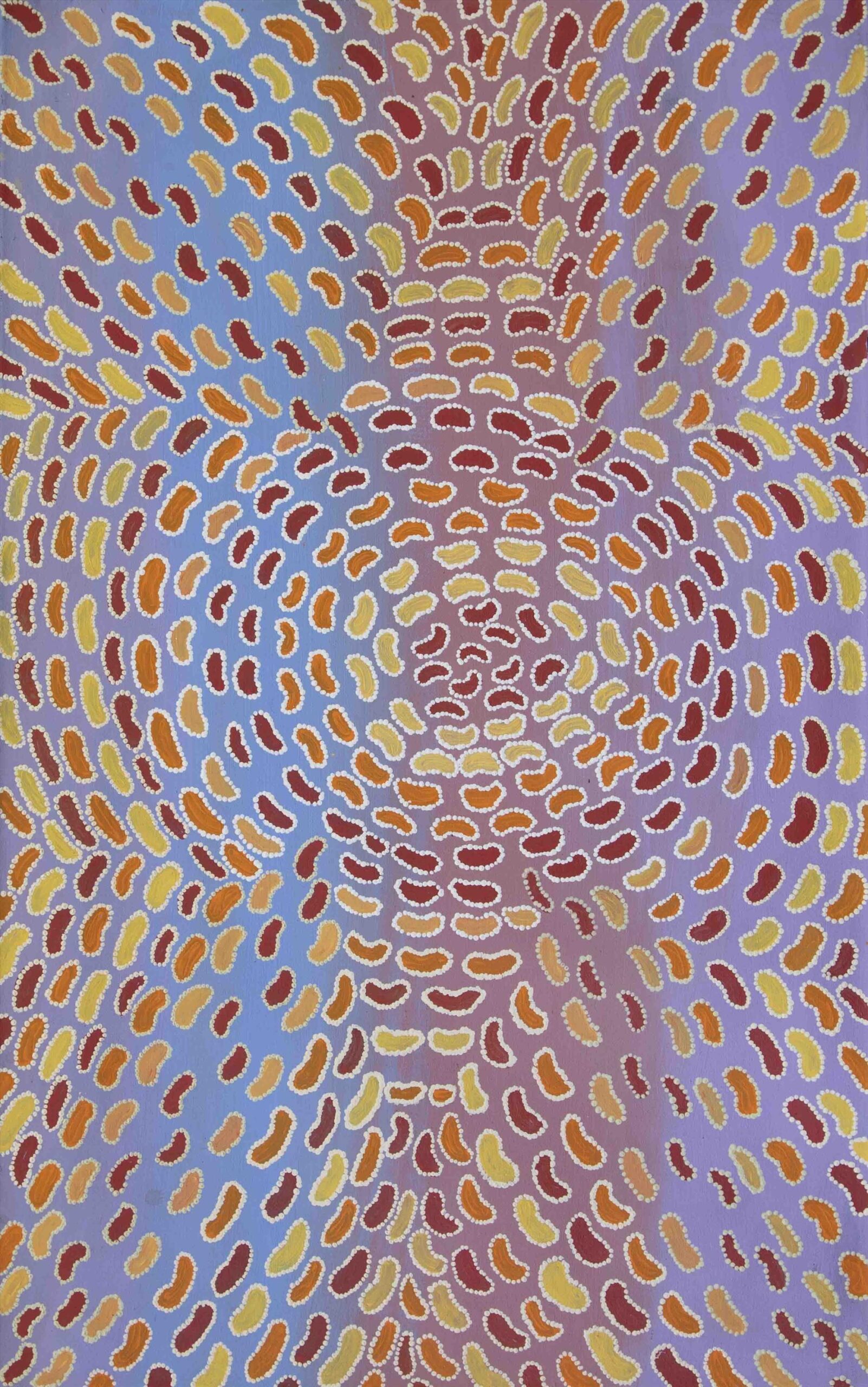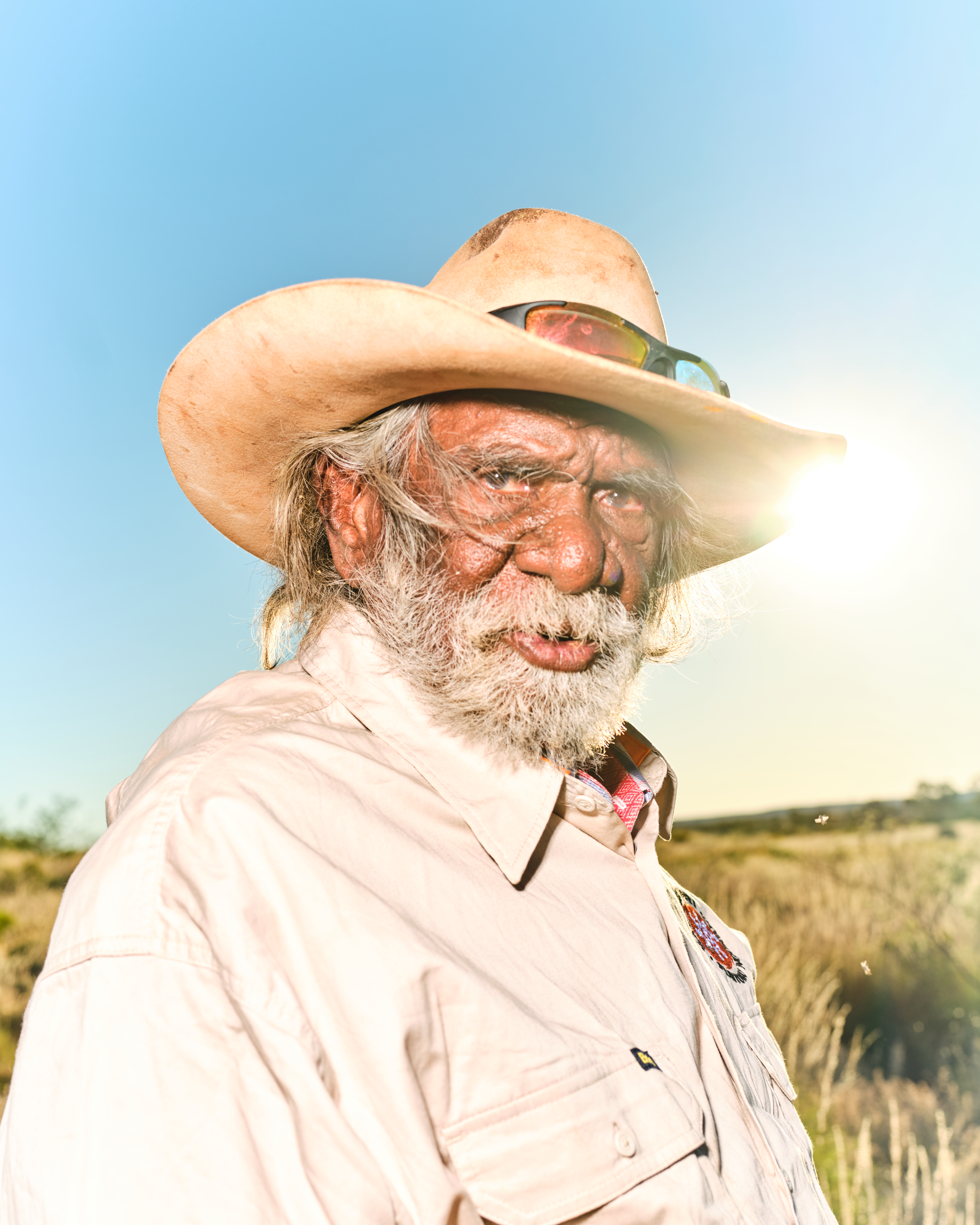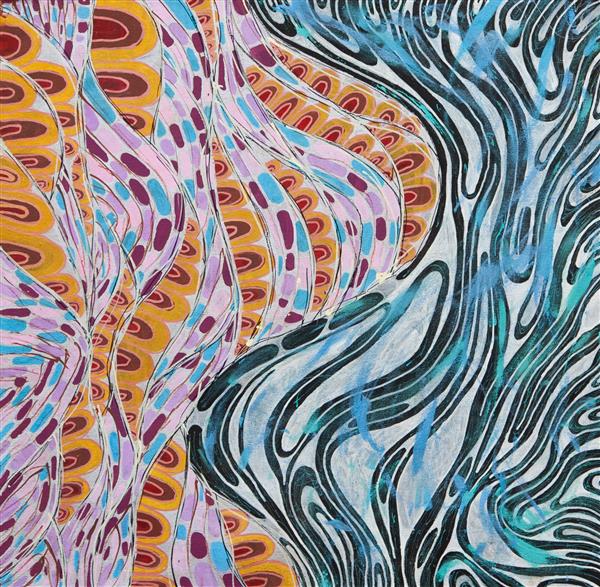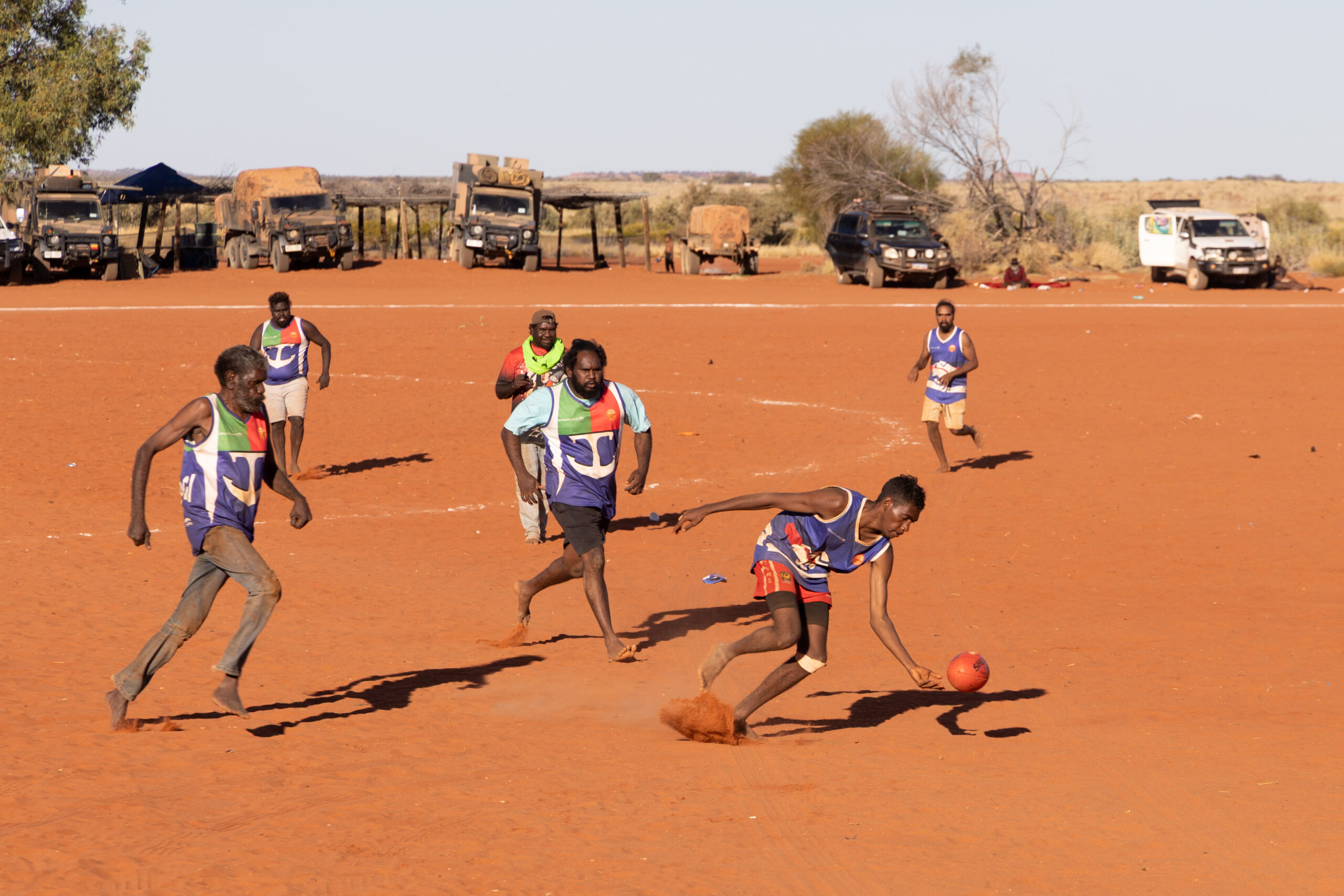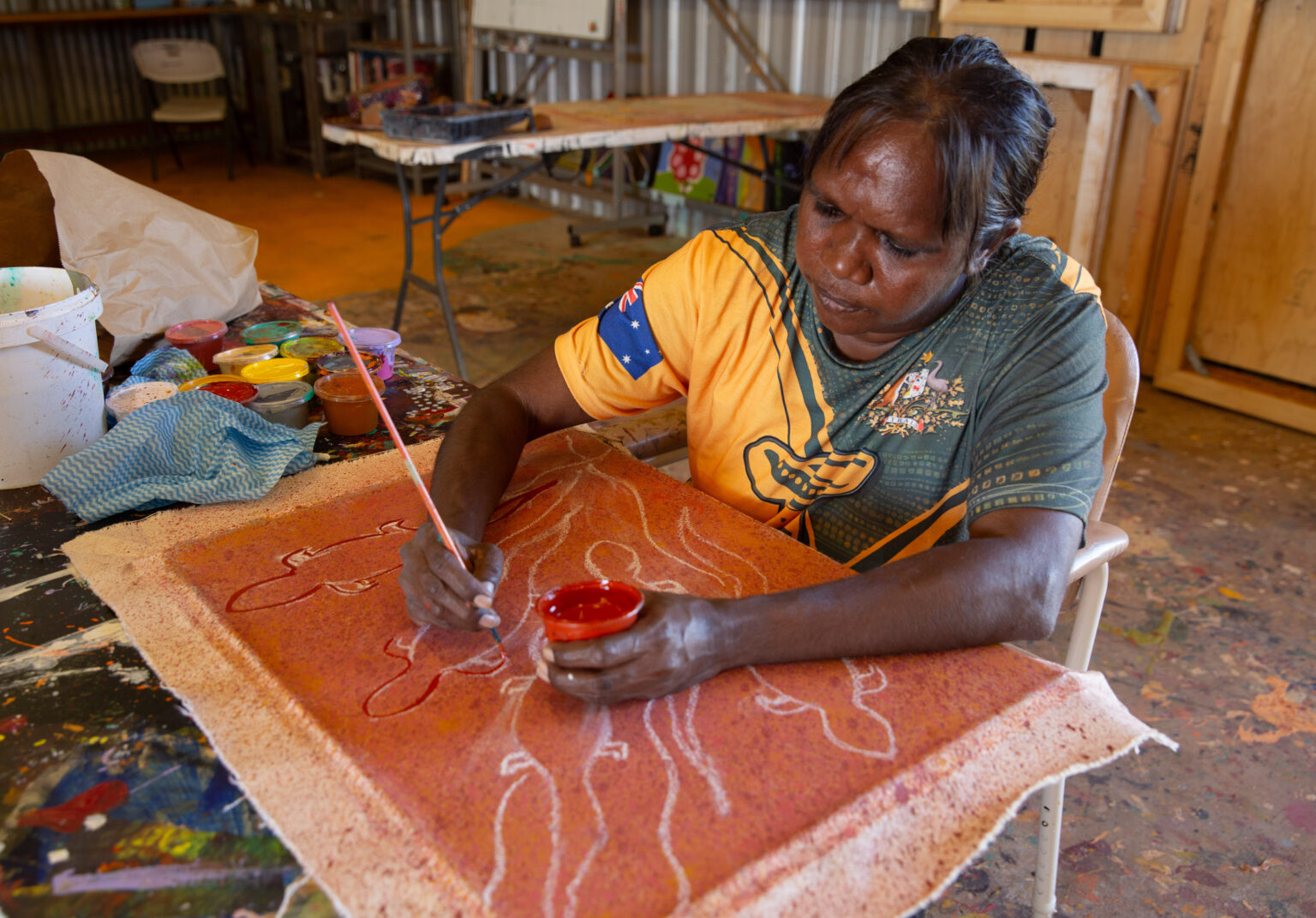
Jenny Butt was born in Bidyadanga, a coastal community in Western Australia’s Kimberley region. Today, she shares her life journey between Bidyadanga and Parnngurr, reflecting on how the contrasting landscapes and the teachings of her grandparents have deeply influenced and enriched her art.
How do you like your tea?
I have my cup of tea with no sugar, just milk. Not so hot, it’s warm.
What’s happening in Parnngurr today?
We are here at the Martumili shed with Nyamu Muuki and my brother Derrick and Simon here, yeah. We are here relaxing and doing some painting. Sharmicka my daughter and my Nana Nola were here earlier as well and they were painting. Later we’ll go home.
And you’re going on a camp next week aren’t you?
Yeah, we are going on a trip with KJ rangers, we are going with grandfather Muuki and grandmother Nola to see the countryside north of here towards Punmu to Kulyakartu.
Can you talk about your life, where were you born?
I was born in Bidyadanga near Broome, by the coast. And I started to come this way (Parnngurr) to visit families and old people. Then I came this way more and started to stay here for a while. I came when my oldest son was six years old and I’ve been going back and forward, back and forwards. I brought my other kids here to Parnngurr. I have a family connecting things.
And it’s been good you know, it’s been a good experience, especially seeing both sides of Country. Going back fishing, doing coastal stuff, coming here to Parnngurr, going out on the land, hunting and having bush food from the land. It’s been a good experience painting and learning from the old people.
Where did you start painting?
I started painting in Bidyi, I started there. My first painting in Bidydanga was with TAFE in a training. It wasn’t really a selling painting, we were just starting to learn about painting, texture and colour. Then we started to sit with the other Bidyadanga mob and paint at the women’s centre. We had a place we can paint there. I didn’t really know what painting was then, I was just painting and mixing colours. But in painting, it’s not just painting, there’s a story behind painting too. Yeah.
So, I came this way and started to get a different style of painting, learning with these old people and how they see the land and colour. I started to open my eyes and started to picture things in my mind. Especially going out and looking at the colors with the ground and the sand. Learning about their painting and hunting, it opened my mind and my eyes too. Learning…learning two ways, you know? Up that way, we’re painting about the seas, then I come here and we are painting about the land. Especially when we are painting about burning the Country, about the plantation, when we burn the Country and the plants grow again. Learning about plants and bushtucker, also hunting the Goanna. And when we go out and see the colour of land, it’s inspiring.
When did you first start painting with Martumili?
I started with Martumili a long time ago, since I started painting.
What’s next for you in your life?
Um…Not sure. Wait and see what the next step is.
It’s been great seeing how your paintings have evolved over the years.
Yeah… I’m doing a different style now, different style of painting. I was copying Nana Nola a bit, her style of painting, learning with her, going out hunting out bush. Her and Muuki, they show us about animals, what they eat and learning about the different seasons, what time it’s good to hunt and different bush foods. It’s been good for me, learning with these old people, they share their knowledge with us, pass it on to us. We can do it through painting. I’m also painting with the kids, learning with the kids about the bush foods, so the knowledge can keep going to the next generation.
That’s great, do you want to talk about anything else?
Na, I’m alright.
Thanks for the chat!
Words by Simon Gillett in conversation with Jenny Butt
